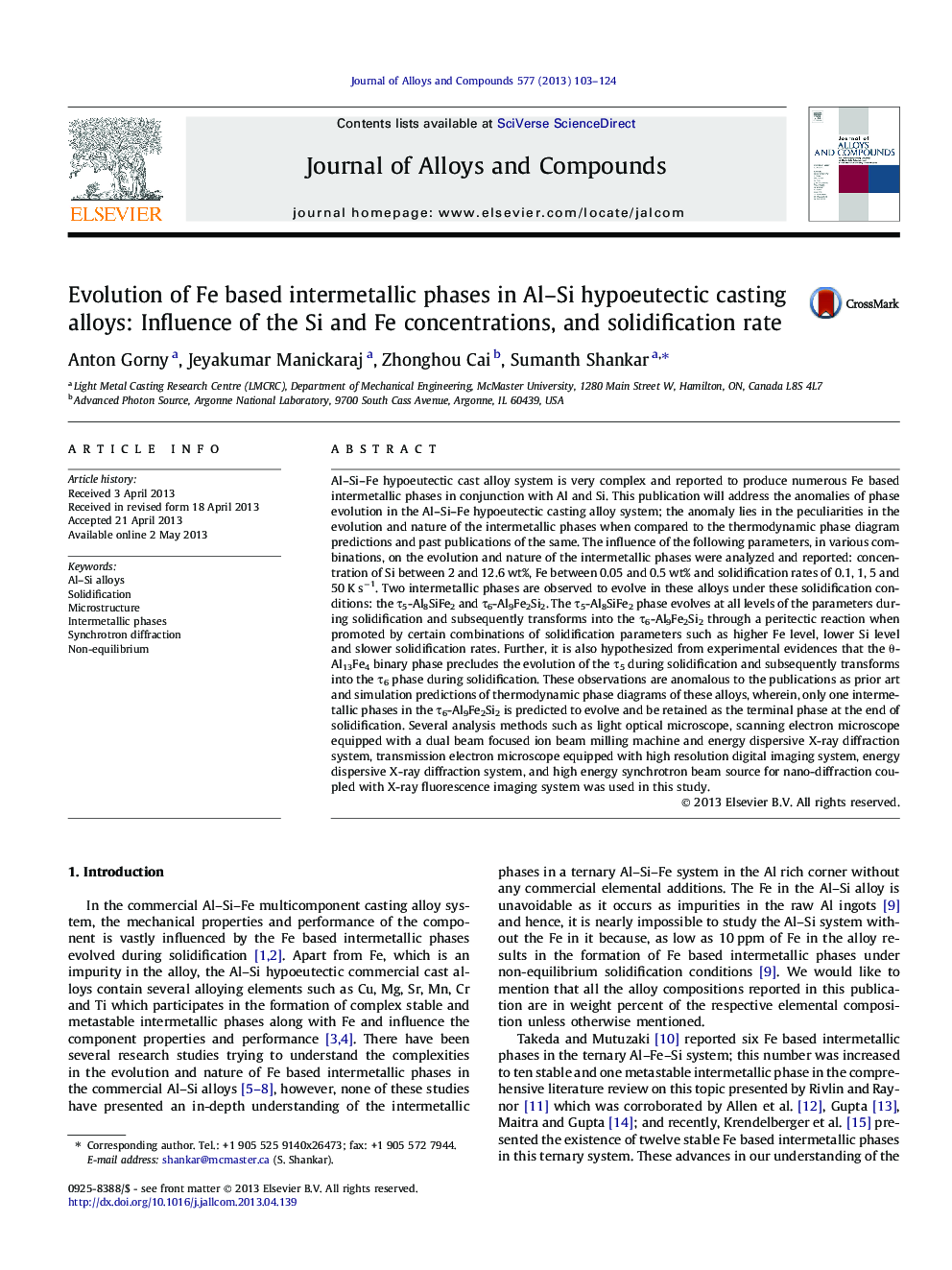| Article ID | Journal | Published Year | Pages | File Type |
|---|---|---|---|---|
| 8002604 | Journal of Alloys and Compounds | 2013 | 22 Pages |
Abstract
Al-Si-Fe hypoeutectic cast alloy system is very complex and reported to produce numerous Fe based intermetallic phases in conjunction with Al and Si. This publication will address the anomalies of phase evolution in the Al-Si-Fe hypoeutectic casting alloy system; the anomaly lies in the peculiarities in the evolution and nature of the intermetallic phases when compared to the thermodynamic phase diagram predictions and past publications of the same. The influence of the following parameters, in various combinations, on the evolution and nature of the intermetallic phases were analyzed and reported: concentration of Si between 2 and 12.6 wt%, Fe between 0.05 and 0.5 wt% and solidification rates of 0.1, 1, 5 and 50 K sâ1. Two intermetallic phases are observed to evolve in these alloys under these solidification conditions: the Ï5-Al8SiFe2 and Ï6-Al9Fe2Si2. The Ï5-Al8SiFe2 phase evolves at all levels of the parameters during solidification and subsequently transforms into the Ï6-Al9Fe2Si2 through a peritectic reaction when promoted by certain combinations of solidification parameters such as higher Fe level, lower Si level and slower solidification rates. Further, it is also hypothesized from experimental evidences that the θ-Al13Fe4 binary phase precludes the evolution of the Ï5 during solidification and subsequently transforms into the Ï6 phase during solidification. These observations are anomalous to the publications as prior art and simulation predictions of thermodynamic phase diagrams of these alloys, wherein, only one intermetallic phases in the Ï6-Al9Fe2Si2 is predicted to evolve and be retained as the terminal phase at the end of solidification. Several analysis methods such as light optical microscope, scanning electron microscope equipped with a dual beam focused ion beam milling machine and energy dispersive X-ray diffraction system, transmission electron microscope equipped with high resolution digital imaging system, energy dispersive X-ray diffraction system, and high energy synchrotron beam source for nano-diffraction coupled with X-ray fluorescence imaging system was used in this study.
Keywords
Related Topics
Physical Sciences and Engineering
Materials Science
Metals and Alloys
Authors
Anton Gorny, Jeyakumar Manickaraj, Zhonghou Cai, Sumanth Shankar,
